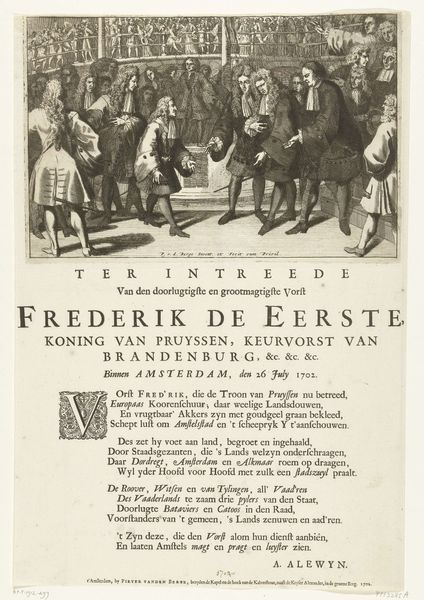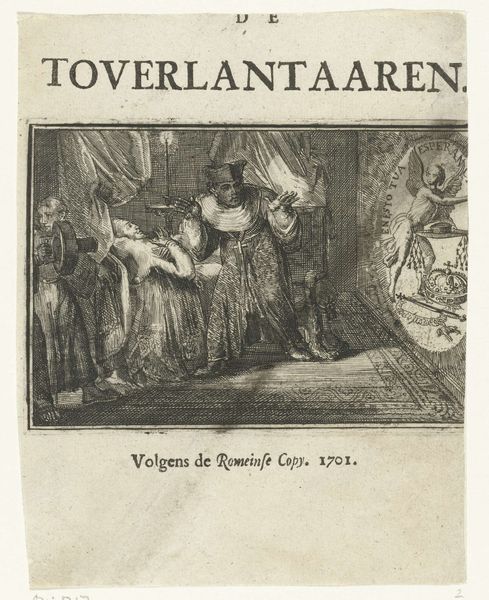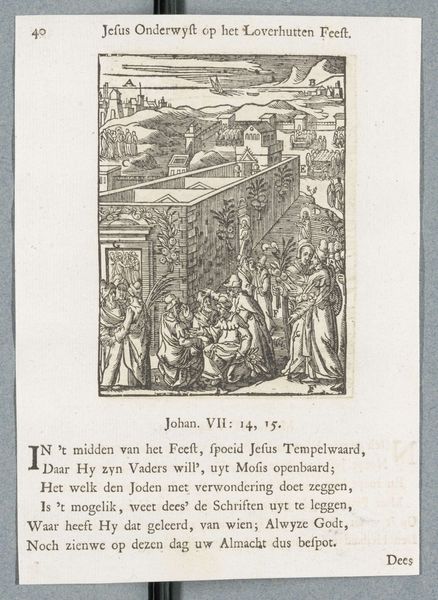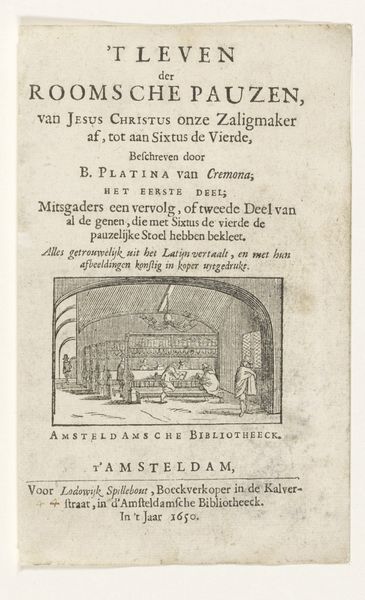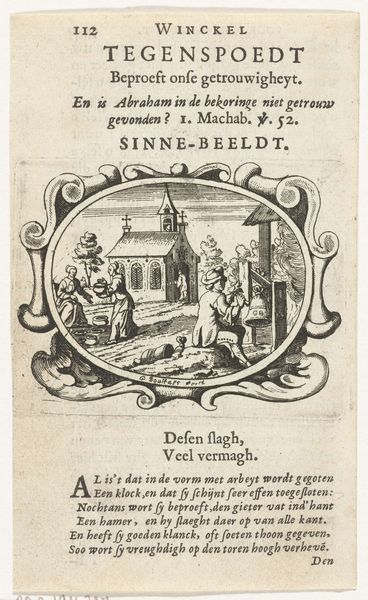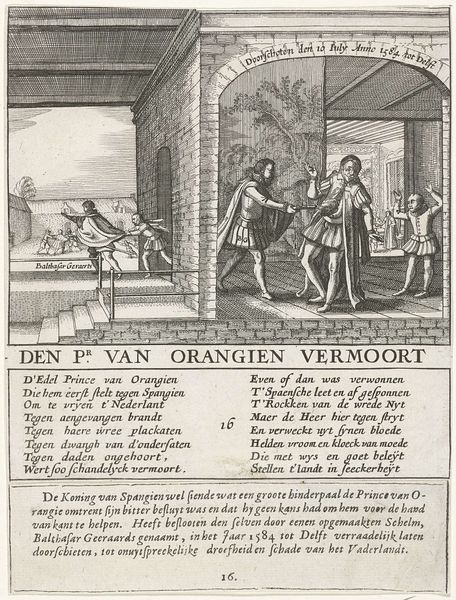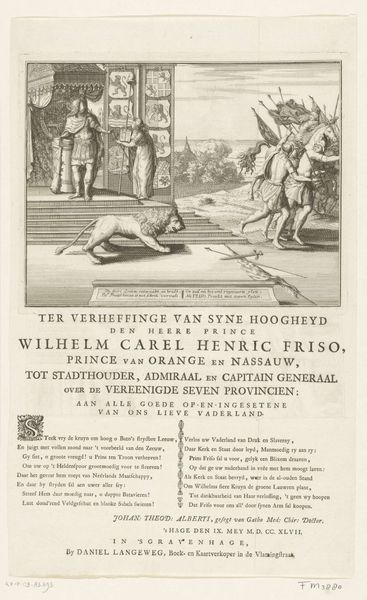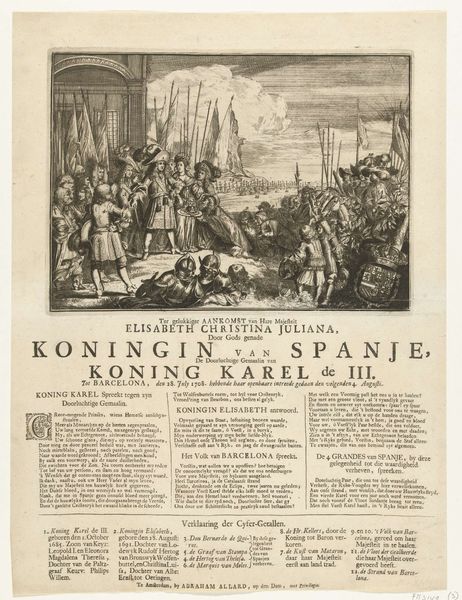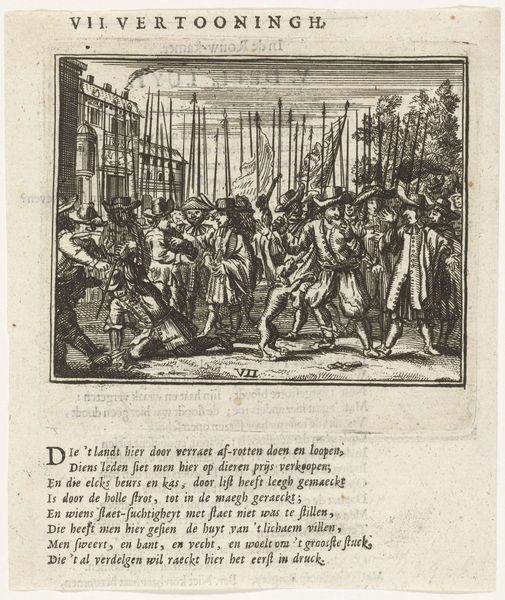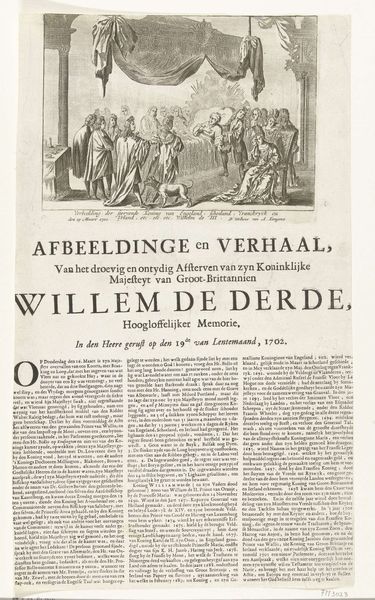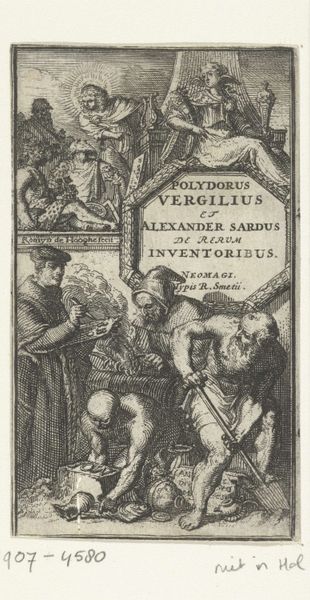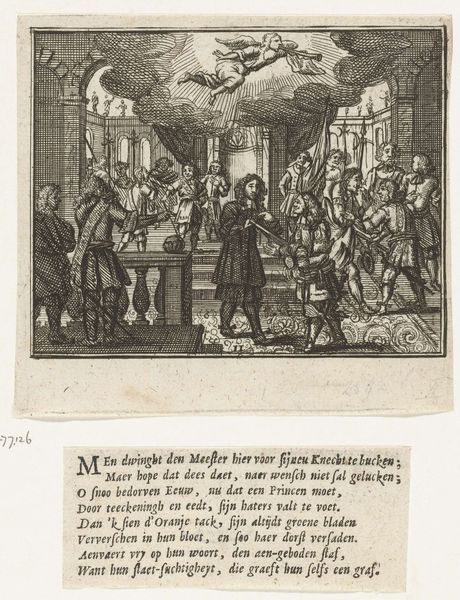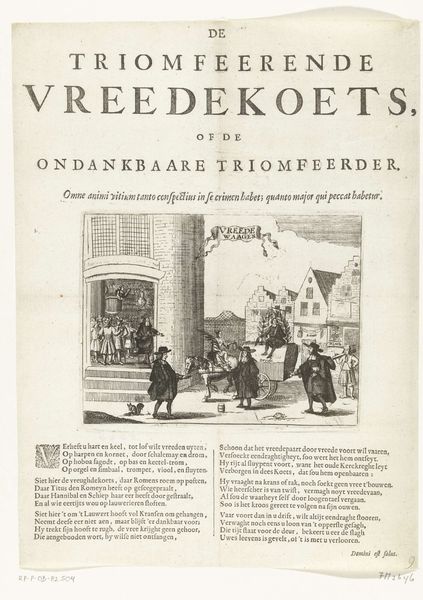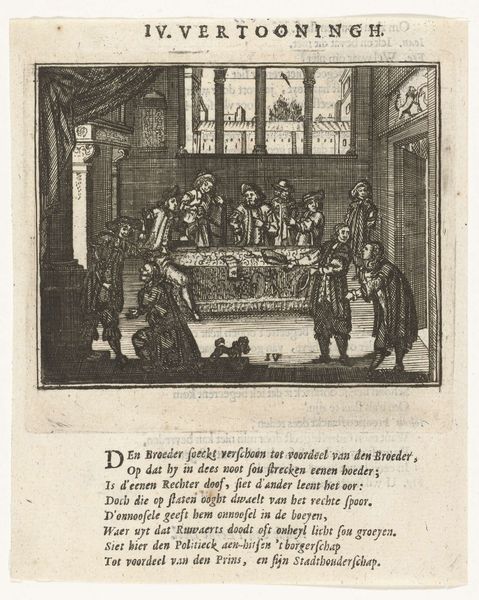
print, engraving
#
narrative-art
#
baroque
# print
#
old engraving style
#
figuration
#
history-painting
#
engraving
Dimensions: height 207 mm, width 300 mm, height 150 mm, width 265 mm
Copyright: Rijks Museum: Open Domain
Editor: This engraving, titled "Spotprent op de dood van Jacobus II" from around 1690-1701, attributed to Pieter van den Berge, shows a scene of mourning or perhaps even ridicule, given the almost chaotic composition and crowded figures. I’m struck by the contrast between the somber subject matter and the rather theatrical presentation. What do you see in this piece? Curator: What grabs my attention immediately is the fascinating combination of mourning and political commentary. This isn't just a depiction of death; it’s a carefully constructed narrative using potent symbols. Look at the arrangement of the figures around the deathbed – who do they represent, and what are they doing? Consider the significance of the objects placed near the deceased, such as the crown on the table: are they symbols of lost power? The symbols aren't universal. The intention would have been immediate when viewed at the time. Editor: That's insightful. I hadn't considered the specific roles and symbolic meanings behind each figure, just that they were people in grief. The crown's placement does suggest a critique of power. Curator: Exactly. And note how the architecture itself seems to press in on the scene, creating a sense of confinement. The cultural memory of exile and the yearning for lost sovereignty become palpable through such visual choices. It raises interesting questions, doesn't it? Why present this passing as almost a stage play for scrutiny? What are the implications of representing death in such a politicized manner? Editor: It's like the artist uses the scene not just to commemorate death, but also to dissect the meaning of his life and reign through a complex language of symbols. I never considered how much could be communicated through these seemingly simple elements. Curator: Visual language carries meaning. It continues to echo, triggering shared emotions and ideological sentiments, reshaping our understanding of the past and ourselves. This has been illuminating!
Comments
No comments
Be the first to comment and join the conversation on the ultimate creative platform.
